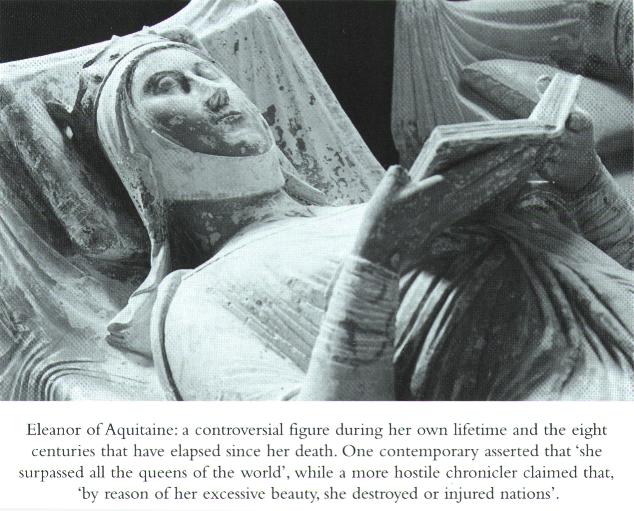
The University and the Rise of Courtly Love:
Courtly Love and Cultural Influence
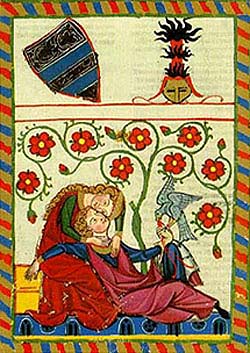
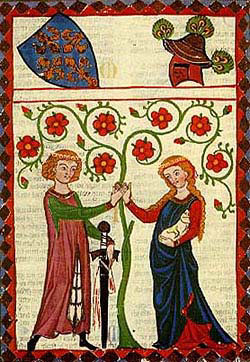
Brandy Stark 07-07-07
History and origin:
The term amour courtois (courtly love) was given its original definition by Gaston Paris in 1883. In an article on Medieval behaviors, he proposed that the “lover” accepts the independence of his mistress and tries to make himself worthy of her by acting bravely and honorably and by doing whatever deeds she might desire. Sexual satisfaction was not necessarily the goal or even end result, though sexual attraction could be a part of courtly love.
- Though not directly addressed in Medieval writing, other terms, such as fin'amor (fine love) and other terms and phrases associated with "courtliness" and "love" are common throughout the Middle Ages.
- Given that practices similar to courtly love were already prevalent in the Islamicate world, it is very likely that Islamicate practices influenced the Christian Europeans.
- In 11th-century Spain, a group of wandering poets appeared who would go from court to court, and sometimes travel to Christian courts in southern France.
Definition:
Courtly love was the study of the bonds of humankind. It brought the elements of theological study into the secular mindset as the emotion of love combined with rational, critical thought. The eleventh century foundations of courtly love were, at first, a conception of love that defined friendship; love was seen as recognizing the virtue in another human being. It was also an ethical behavior, grace, and thought which aimed at the cultivation of virtue in the whole of mankind (Jaeger, 1994).
It found expression through the troubadours such as William IX, Duke of Aquitaine, in the 11th century. Sample of his writing:
I have given up all I loved so much:
chivalry and pride;
and since it pleases God, I accept it all,
that He may keep me by Him.
I enjoin my friends, upon my death,
all to come and do me great honour,
since I have held joy and delight
far and near, and in my abode.
Thus I give up joy and delight,
and squirrel and grey and sable furs.
Similar to a cult of friendship, writings document concern for the wellness of the reputation and standing among men. They also encourage men to forgo arrogance and to continue the study of how to win virtue.
One of its most important contributions was the elevation of the status of women. Eventually, courtly love evolved to the literature of leisure, directed to a largely female audience for the first time in European history.
How it worked: Poets declared themselves the servant/vassal of the lady and addressing her as midons (my lord), thus not revealing her name, and flattering her at the same time. The troubadour's model of the ideal lady was the wife of his employer or lord, a lady of higher status, usually the rich and powerful female head of the castle. The poet gave voice to the aspirations of the courtier class, for only those who were noble could engage in courtly love (or could be engaged with higher education).
Other behaviors included:
- Announcing his attraction to the lady, usually via eyes/glance
- Worship of the lady from afar
- Declaration of passionate devotion
- Virtuous rejection by the lady
- Renewed wooing with oaths of virtue and eternal fealty
- Moans of approaching death from unsatisfied desire (and other physical manifestations of lovesickness)
- Heroic deeds of valor which win the lady's heart
- (Literarily speaking): Consummation of the secret love
- (Literarily speaking): Endless adventures and subterfuges avoiding detection
Courtly love saw a woman as an ennobling spiritual and moral force, a view that was in opposition to ecclesiastical sexual attitudes. Rather than being critical of romantic and sexual love as sinful, the poets praised it as the highest good. Marriage had been declared a sacrament of the Church at the Fourth Lateran Council (1215). Within Christian marriage the only purpose of sex was for procreation; the ideal state was celibacy, even in marriage. This may not have been hard to maintain as most marriages were arrainged as part of the business/guild/and feudal system. This, then, allowed a man who was interested in a woman to aspire for her under chaste circumstances, seeking her first for her virtue. She was the unattainable ideal (a role that we also see with the Virgin Mary, who was also heavily promoted at this time).
Some of the finest writing can be found in the old French love lyrics from the early twelfth century. Women were portrayed as teachers of love offering instruction in virtue, and men were their students. The women of these poems taught that a lover must show generosity through acts of charity, particularly to impoverished nobles. He must be humble to all and ready to serve all. He must never speak ill of anyone, but where he sees evil men, he should discreetly reprove their bad behavior. He should never mock someone in distress. He should not be prone to quarrels and arguments, but rather should strive to reconcile disputes and arguments. Lastly, showing the depth of his cultivation, he should moderate his laughter, especially in the presence of women. These poems show the core of courtly learning: humility, generosity, gentleness, deference, and kindness. Virtually none of the lessons would have been out of place n the moral discipline of the schools, as passed from school master to student. The emphasis in these writings remains the aspect of manifesting virtue through behavior in order to make it visible (Jaeger, 1994).
As an example, read: DE ARTE HONESTE AMANDI [The Art of Courtly Love], Book Two: On the Rules of Love By: Andreas Capellanus: The Art of Courtly Love, (btw. 1174-1186) (exerted through the Medieval Sourcebook, url below):
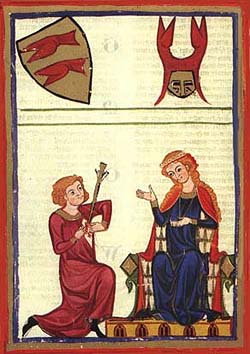
How does the university/cathedral school influence the rise of courtly love, according to Jaeger’s Envy of Angels?
First, the university introduces new concepts and mergest them with older church-inspired behaviors and ideologies.
Studium: Universities raised literary awareness of secular, classical sources which were now looked at as documents of authority. Students came in contact with these writers whose Latin-language works have been preserved within the monastic environment; these works were read, studied and taught by church-educated "clerks" (i.e. members of the clergy, but also scholars and intellectuals who are not destined to a career within the Church). These works include:
- Homer (Helen of Troy)
- Virgil (Aeneas, devotion to duty)
- Ovid (Metamorphosis, among other works)
Christian Writers: Worked in Latin, as did the Christian forefathers. This made Latin a universal language of scholarship and brought the dead language back to life. They preserved works (doctrine, scripture, and philosophy) that had core aspects of “courtly love”:
- Jesus was considered “the groom”, the Church “the bride” (ecclesia, a feminine noun in Latin).
- The Church was depicted as a crowned woman.
- God was also the groom, the soul of the Christian the (anima – feminine noun) the bride.
- Christ was also depicted as the King of Heaven, Mary the Queen of Heaven. As mother-son, they would be chaste.
- Starting in the mid-twelfth century, Mary was depicted as a crowned woman, Jesus as a crowned king.
Political Power: Medieval people thought that power had been transferred from Greece to Rome, and then from Rome to the kings of Europe. The Holy Roman Empire was regarded as the Christian descendant of classical Rome. (Note: There is a heavy French connection with power, church, and courtly love. It is through marriage that these ideas transfer to England to create the Arthurian legends. See Eleanor of Aquitaine, grand-daughter of Count William IX of Aquitaine, cited above.She was married first to King Louis VII of France, who had the marriage annulled in 1152. She then married Henry II of England, thus bringing to England her great love of the arts, and her patronage).
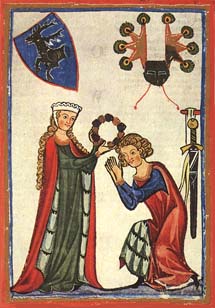
Resources:
Delahoyde, M. “Courtly Love” http://www.wsu.edu/~delahoyd/medieval/love.html, as retrieved July 7, 2007.
Halsall, P. (1997) “Medieval Sourcebook: Andreas Capellanus: The Art of Courtly Love, (btw. 1174 – 1186)”http://www.fordham.edu/halsall/source/capellanus.html, as retrieved July 7, 2007.
Jaeger, S. (1994). The Envy of angels: Cathedral schools and social ideals in Medieval Europe, 950 – 1200. Philadelphia, PA: University of Pennsylvania Press.
Schwartz, D. (2002) “Medieval Literature,” http://cla.calpoly.edu/~dschwart/engl203/margery203.htmlas retrieved July 7, 2007.

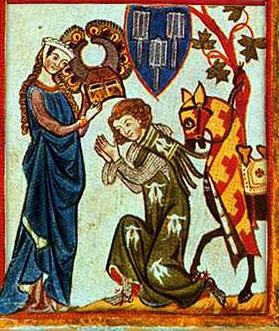
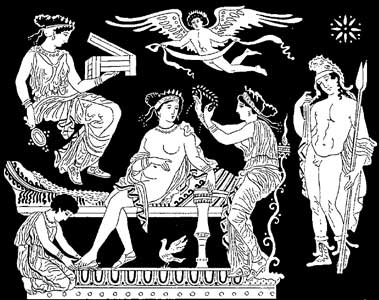
Results of courtly love:
- They help to create some of our greatest legends, such as King Arthur and the Knights of the Round Table.
- It branches off into behaviors, such as chivalry. Thirteenth Century conventions of chivalry directed that men should honor, serve, and do nothing to displease ladies and maidens. Knights were members of the noble class socially as bearers of arms, economically as owners of horse and armor, and officially through religious-oriented ceremony.
- The notion transcends the Middle Ages, as seen in the Elizabethan times. Shakespeare's Romeo and Juliet, for example, shows Romeo attempting to love in an almost contrived courtly fashion while Mercutio mocks him for it.
- This also helps to show a stronger shift between the religious values of the monastic and cathedral schools towards a more secular education.
- This shows the impact that the church had on universities, and that universities had on culture.
A continued point of controversy among historians is whether courtly love was purely literary or was actually practiced in real life. There are no historical records that offer evidence of its presence in reality. Envy of Angels suggests that not only did it exist, but that it was derived from the rising role of the university in sending educated and literate men into the non-secular world. Education, itself, was still influenced by the philosophy of the church, but it transformed in secular society into “courtly love”.
